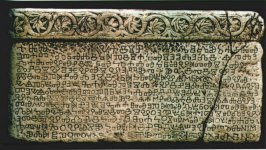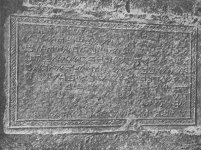gezaf
Ruthenian Bear
- Messages
- 1
- Reaction score
- 0
- Points
- 0
- Location
- Bumpass, Virginia
- Ethnic group
- Hungarian/Ruthenian
- Y-DNA haplogroup
- I2a2 North Dinaric
- mtDNA haplogroup
- H5a1
The following statements appears in the Origins, age, spread and etrhnic association of European Haplogroups and suclades:
The Slavic branch
The origins of the Slavs goes back to circa 3000 BCE. The Slavic branch differentiated itself when the Corded Ware culture (see Germanic branch above) absorbed the Cucuteni_Tripolye culture (5200-2600 BCE) of western Ukraine and north-eastern Romania, which appears to have been composed primarily of I2a2 lineages descended directly from Paleolithic Europeans, with a small admixture of Near-Eastern immigrants (notably E-V13 and T).
Is the statement that the Cucuteni_Tripolye culture appears to have been composed primarily of I2a2 lineage a conjecture based on the distribution of I2a2 in the Western Ukraine and north-eastern Romania, or is it based on some other factual information, such as testing of human remains?
The Slavic branch
The origins of the Slavs goes back to circa 3000 BCE. The Slavic branch differentiated itself when the Corded Ware culture (see Germanic branch above) absorbed the Cucuteni_Tripolye culture (5200-2600 BCE) of western Ukraine and north-eastern Romania, which appears to have been composed primarily of I2a2 lineages descended directly from Paleolithic Europeans, with a small admixture of Near-Eastern immigrants (notably E-V13 and T).
Is the statement that the Cucuteni_Tripolye culture appears to have been composed primarily of I2a2 lineage a conjecture based on the distribution of I2a2 in the Western Ukraine and north-eastern Romania, or is it based on some other factual information, such as testing of human remains?



